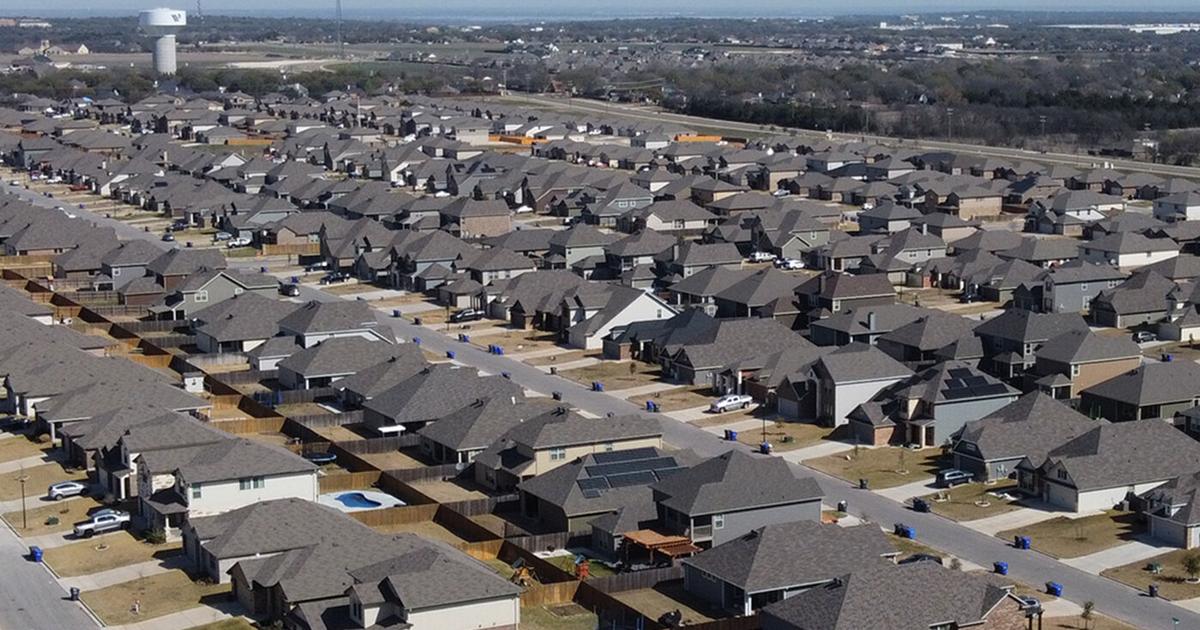[ad_1]
Statistics and stories from the front line reveal Greater Waco does not have enough houses, out-of-staters with cash are winning bidding wars, and builders are poised to raise roofs in impressive numbers this summer.
Toss particulars into a hard hat, shake vigorously, and the result is a $288,470 average price for a home sold in February. That is 12% more than the norm in February last year, and about $200,000 more than the average in February 2000, which is economist Karr Ingham’s base year.
Ingham prepares the Greater Waco Economic Index, tallying wins and losses in the retail, lodging, automobile and housing markets while addressing trends in spending and unemployment. He assigns a raw score that reflects his findings. It pegged 146.6 in February, a GWEI record high.
Warts were hard to find in the February report. The month typically lacks punch for those employed in real estate, but 255 existing homes sold during the month, a nearly 28% year-over-year increase, while 524 changed hands year-to-date through February, a nearly 22% increase.
People are also reading…
“We can host an open house on Saturday, and we’re getting offers by 5 p.m. on Sunday, maybe 10 or more, and these are half-million-dollar houses,” said Kirsten Clements, an agent with Camille Johnson Realtors.
“We have less than a month’s inventory in this market,” said Clements, referencing the supply-and-demand formula that dictates price.

The Greater Waco Economic index of 146.6 is an all-time high.
Clements produced her own report, gleaned from Waco Multiple Listing Service results, showing closed sales across all McLennan County rose 27% in February, year-over-year. The median price of a home sold, as opposed to Ingham’s average price, was $260,835. Inventory dropped to 0.7%, meaning it would take little more than half a month to exhaust all inventory on the market should sales continue at the current pace. Active listings dropped 11% year-over-year, again reflecting the dearth of homes available.
Still, Clements said homes locally remain affordable compared with other metropolitan areas statewide. She said 34% of homes sold in February were priced at $200,000 to $299,000, easily making them the most attractive.
Rachel Pechacek, a senior vice president at the First National Bank of Central Texas, said out-of-state homebuyers look longingly at Waco. She said seven contracts she’s processing now involve out-of-towners.
“Two are from California, one is from Colorado, another is from Iowa, and one is from Washington,” said Pechacek during an interview, mentioning the farthest-flung desiring to live locally. She said one prospect has a daughter whose health condition might improve in Waco’s climate. Another “is just looking for nicer people, they told me,” said Pechacek. One enjoys water sports and wants to live near Waco Surf, formerly BSR Cable Park.
Homebuilders apparently have heard the message about inventory shortages, securing 139 permits to build single-family homes year-to-date through February. That exceeds totals through February last year by 45%.
Retail spending remains a highlight, hitting $903 million during January and February, a 20% year-over-year increase. Spending on automobiles hit $58 million in February, a 29% year-over-year jump, though $123 million in sales in January and February combined reflect a 4.3% decline.
The lodging industry continues its recovery, Ingham said. Hotel revenue in February reached $5.9 million, an inflation-adjusted 153% more than totals in February a year earlier. Revenues are up 102% year-over-year.
“The spending indicators continue to put up some impressive numbers even with inflation taking a chunk out of the growth rate,” said Ingham in his report. “Inflation-adjusted taxable spending per February sales tax receipts across the Greater Waco metro area was up by over 13% in February compared to February of a year ago, and the total through the first two months of the year was up by a whopping 20.2%.”
Ingham discussed the Texas Workforce Commission’s annual revised monthly employment estimates statewide and for metro areas such as Waco.
“These revisions put the COVID-related employment picture in clearer focus,” said Ingham. “According to the revised estimates, 11,000 jobs were lost from February to April 2020. It then took from April 2020 to July 2021 to recover those lost jobs, and the employment situation since then has been very robust in terms of job growth and decline in the unemployment rate.”
Ingham estimated 128,200 people had jobs in the Waco Metropolitan Statistical Area in February this year, a 6.8% increase from the 120,000 estimate one year earlier. Meanwhile, the jobless rate in February registered 4.1%, down from 5.8% a year earlier, Ingham said.
Kris Collins, the Greater Waco Chamber of Commerce’s industry recruiter, said Waco was the first MSA in the state to fully recover jobs lost during the pandemic. The Waco MSA includes Falls and McLennan counties.
Collins Thursday afternoon presented the GWEI report to invited business leaders at the FNB of Central Texas location on Valley Mills Drive.
“The Greater Waco metro area economy continues its impressive performance moving into 2022 with COVID now well in the rearview mirror,” Ingham concluded. “The only question early in the year may be the sustainability of the extraordinary growth rates in spending, employment, and other sectors of the Waco metro area economy, and the GWEI itself.”
He said growth rates may moderate in coming months as performance will be compared with impressive recovery during last year’s second quarter.
[ad_2]
Source link







More Stories
Three Top Reasons For Opting For New Home Construction
Home Plywood Boat Building – Stitch and Glue or Ply on Frame?
Organizing and Documenting for Your Custom House Construction